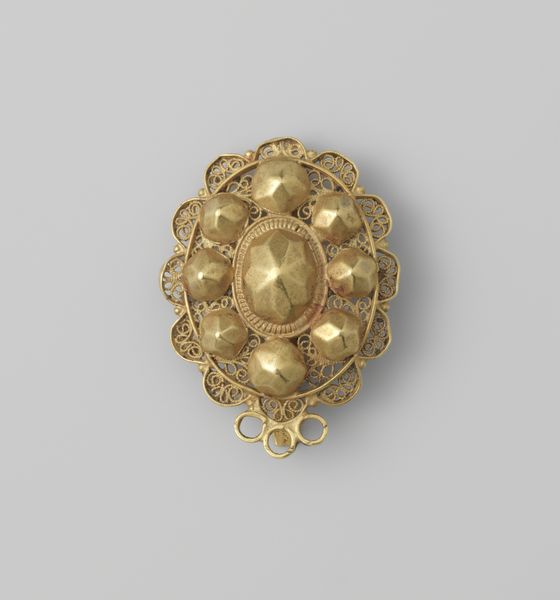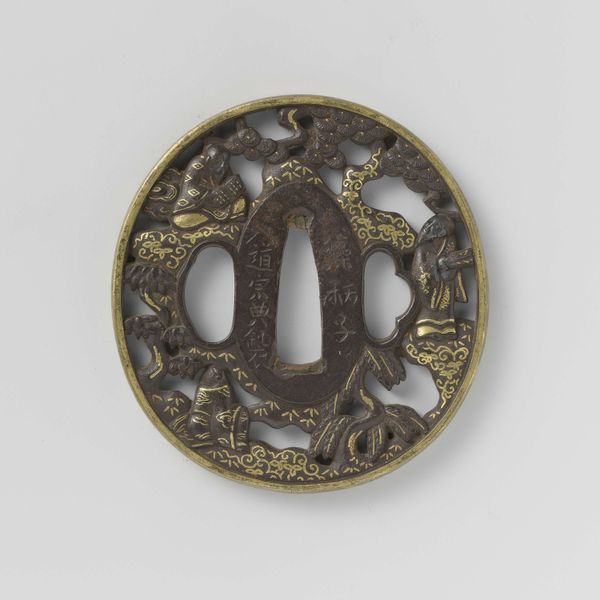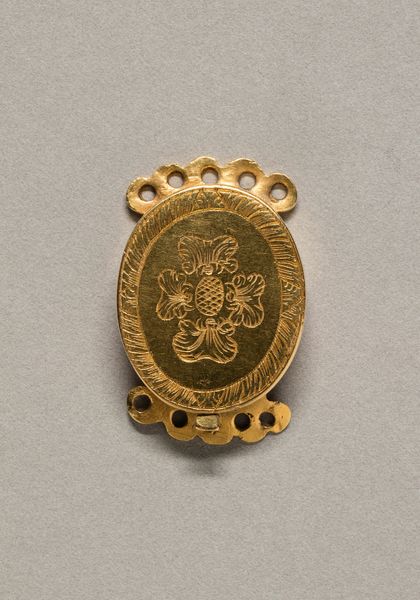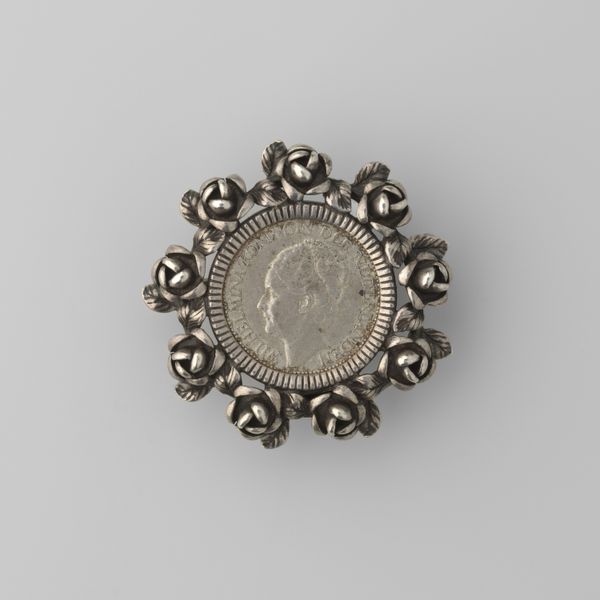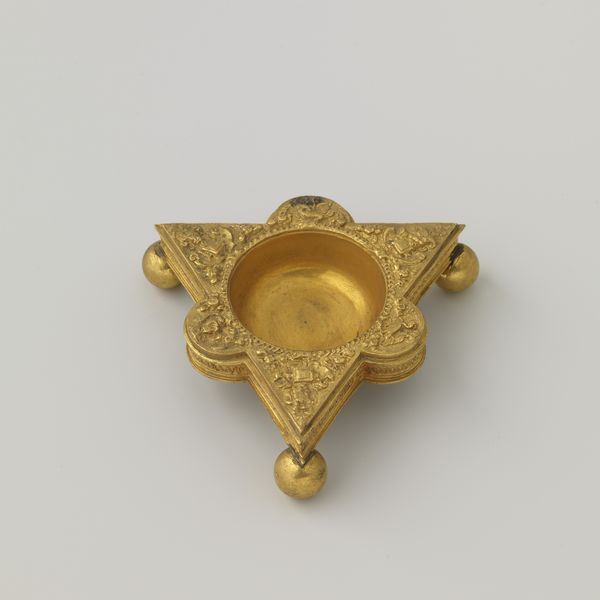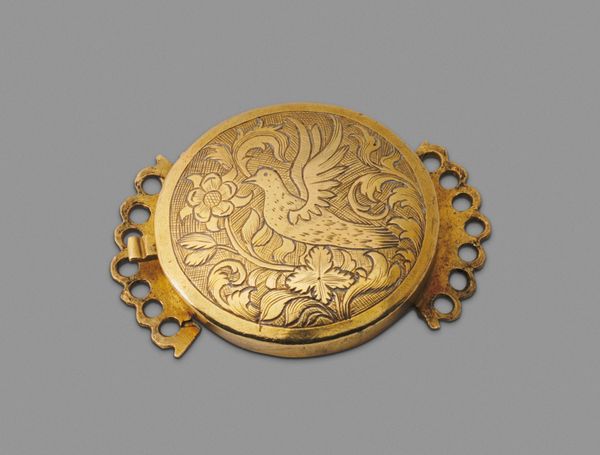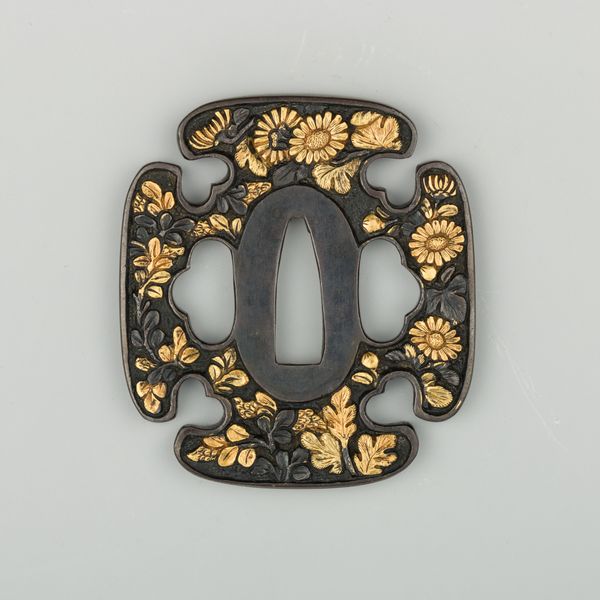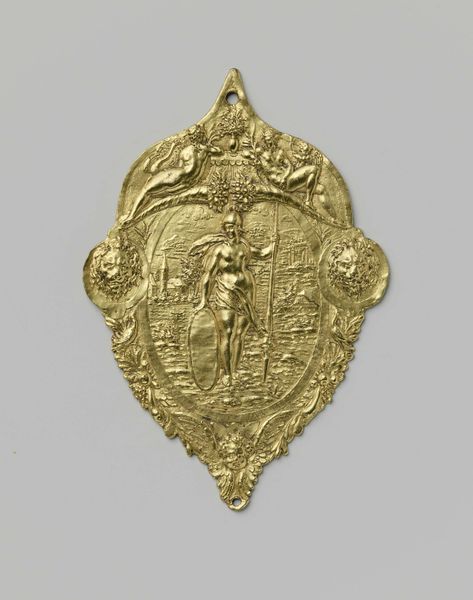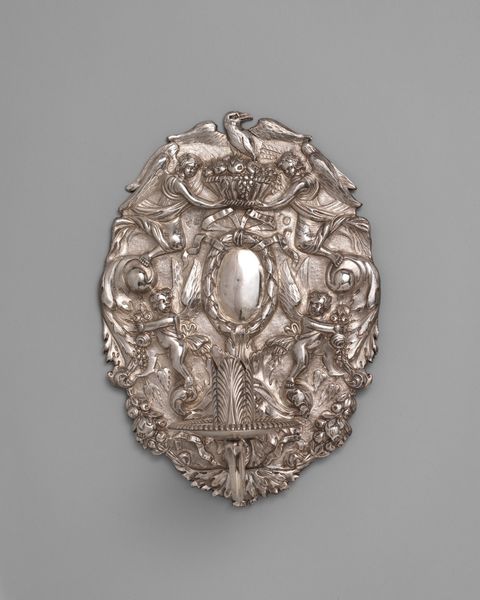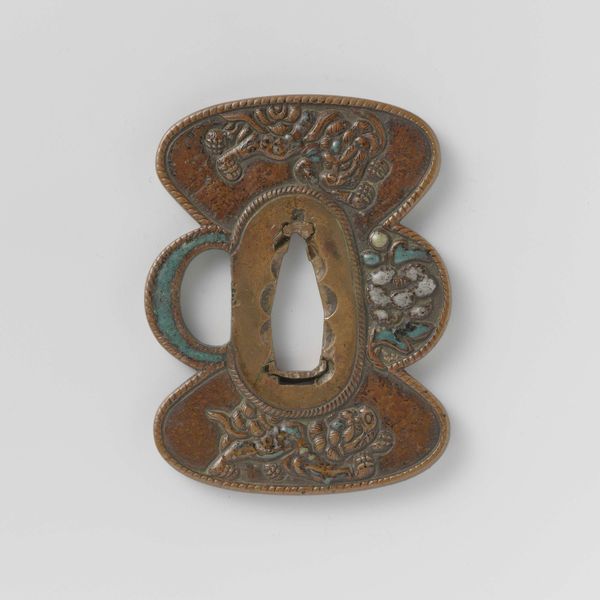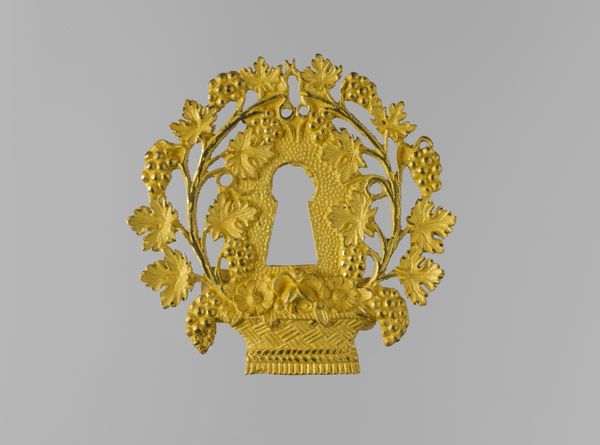
carving, metal
#
carving
#
metal
#
romanticism
#
decorative-art
Dimensions: 2 x 1 7/8 in. (5.1 x 4.8 cm)
Copyright: Public Domain
Editor: This is "Furniture Hardware," likely crafted between 1820 and 1830. It resides here at the Met. The artist is listed as Henry Kellam Hancock. What's immediately striking is the intricate floral detailing and the sheer elegance of this seemingly mundane object. What catches your eye in this little treasure? Curator: Well, imagine a world where even the smallest details speak of luxury. This piece whispers secrets, doesn't it? It's not just about opening a drawer; it's about the ritual, the flourish, the *story* behind what's being locked away. What do you think about the Romanticism influence? Does it fit for something like a piece of furniture hardware? Editor: That's interesting! I hadn’t thought of it that way, but now that you mention it, the focus on emotion and beauty typical of Romanticism, does seem present. I guess I assumed that because it was for furniture it had a completely functional artistic intent. Curator: And there's the delightful tension, isn't it? Taking something purely functional and imbuing it with artistry. Consider the craftsman: patiently carving metal, transforming it into something resembling a miniature garden! You almost wonder what treasures were deemed worthy of such elaborate guarding. Perhaps letters of forbidden love, secret recipes… or just someone's favorite socks? It tickles the imagination. It looks almost Baroque too with the detail work! Editor: Socks aside, I'm now seeing the keyhole cover in a completely new light. It's not just a piece of hardware; it's a tiny portal into the past! Thank you! Curator: Precisely! And isn’t that what art is all about, after all? Unlocking doors to new perspectives, revealing beauty in unexpected places?
Comments
No comments
Be the first to comment and join the conversation on the ultimate creative platform.
